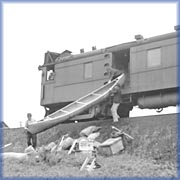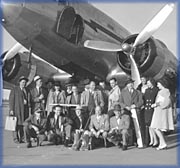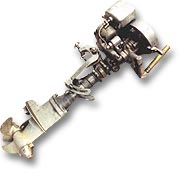|
Run to the River
Easy transportation and boats with motors increase
fishing pressure in the 1930s and 1940s.
 he car was only one
means of increased access to New Brunswick's fishing waters.
Salmon anglers had travelled by comfortable, conveniently
scheduled trains since the 1870s, and by the 1920s New Brunswick
boasted more miles of track per capita than anywhere else in the
country. Branch lines ran everywhere, carrying freight and
passengers - including fishing supplies, tackle, and
anglers. he car was only one
means of increased access to New Brunswick's fishing waters.
Salmon anglers had travelled by comfortable, conveniently
scheduled trains since the 1870s, and by the 1920s New Brunswick
boasted more miles of track per capita than anywhere else in the
country. Branch lines ran everywhere, carrying freight and
passengers - including fishing supplies, tackle, and
anglers.
|

|

Canoe being lifted from a Canadian National
rail car for a trip down the Cains River in the Miramichi river system, 1939
(Provincial Archives of New Brunswick, P93-N28)
|
|
Following World War II, arrival by airplane became common,
especially for out-of-province visitors. On the rivers and lakes,
the use of motor-powered canoes and boats instead of horse-drawn
scows meant faster trips for fishermen and supplies. Outboard
motors, in particular, increased in size and power during the
1930s and were seen on more and more square-stern fishing canoes.
Motorboats became popular, and they often took on the role of
workhorse vehicle, towing canoes and fishermen to and from the
fishing pools.
|

|

A fishing party arriving at Chatham airport
in northeastern New Brunswick, 1946
(Provincial Archives of New Brunswick, P93-N317)
|

|

This outboard motor, Model AC-50,
made by the Johnson Motor Company, Waukegan, Illinois, was used on
the Miramichi river system in the late 1930s and early 1940s.
(The Atlantic Salmon Museum on the Miramichi River,
Doaktown, New Brunswick, 984.57.1)
|
|
|
|
|
|



